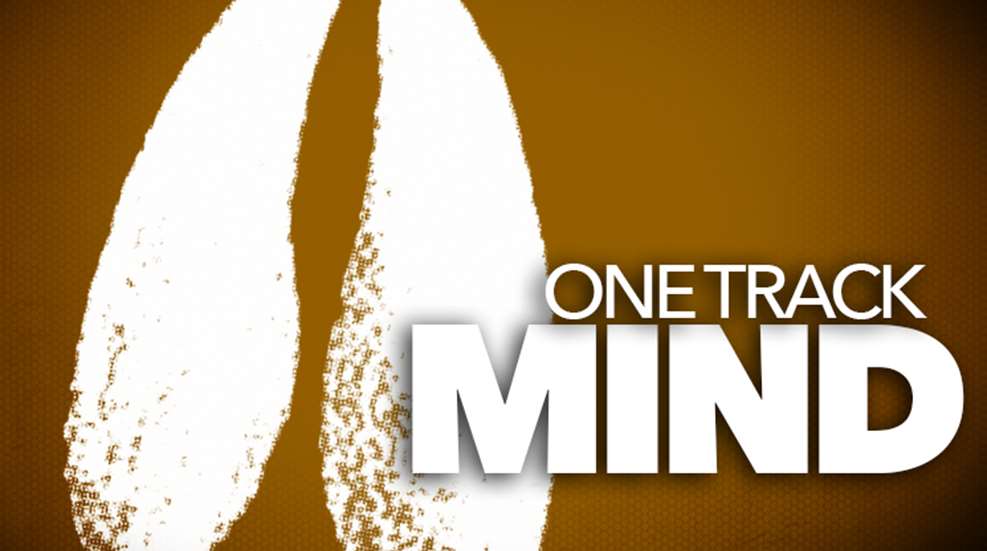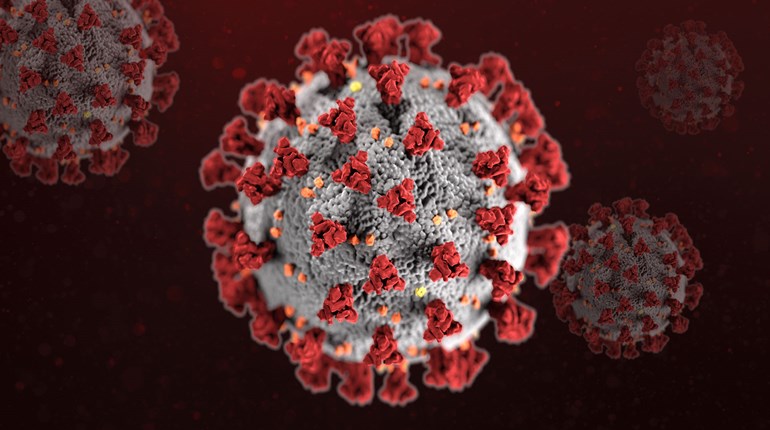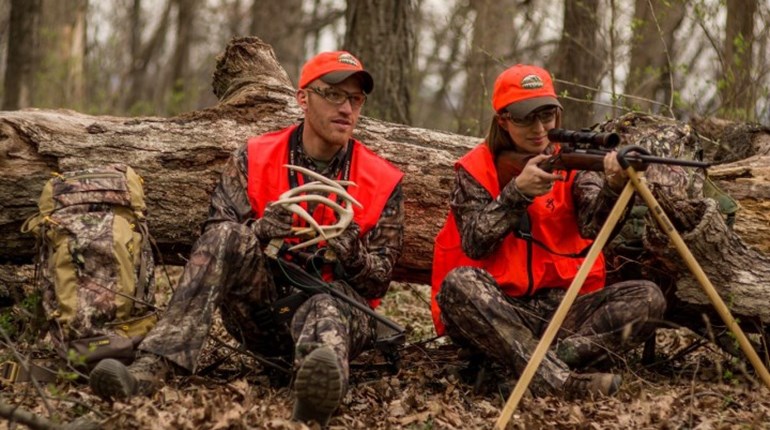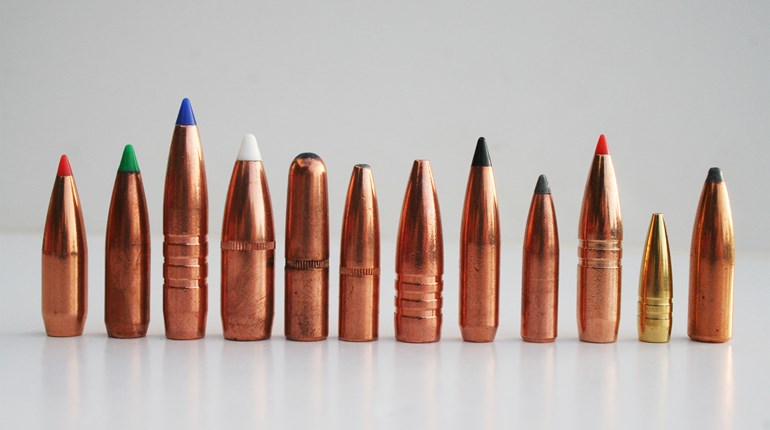
Bowhunt whitetails long enough and you’ll find yourself in a situation where you have to try and follow a blood trail after dark. After all, many good bucks do not make an appearance until it is almost too dark to see your sight pins. When you shoot them and they run off, you have to go find them. And while bloodtrailing is more art than science and each situation is unique unto itself, here are some rules that will help you quickly recover your deer.
Listen carefully:
You shoot a deer and it runs off. When you lose sight of it, sit quietly and listen to see if you can hear it fall down. Note the noises made. Were those antlers clacking against limbs and brush? Oak leaves being kicked aside? The sounds of hooves splashing through a creek? I like to wait at least 5 to 10 minutes before climbing down from my stand, both to give the animal time to get out of there and for my nerves to calm down enough that is both safe for me to descend and make good decisions.
Which way did he go?:
Carefully note the animal's direction of travel after the shot. This can make finding the initial trail much easier, especially in the event there isn't much blood.
Know where the deer was when you shot: Keep your cool and, before you climb down, pick out a discernible landmark and mark the spot. I take a rangefinder reading off the spot so that once on the ground I can walk exactly to the right place.
The scene of the crime:
When you get to the spot, search slowly and carefully for blood and tracks, being as quiet as you can in case the deer is still alive and close by. The most important clue you can find is the arrow, but hair and blood are critical, too. Once I decide it is time to take up the trail, I dig a small GPS out of my pack and mark the spot. I really like the compact, simple units like the Brunton Get Back and Bushnell BackTrack for this task.
The Buddy System:
Trailing after dark is almost always best done with two people. By yourself it is easy to miss something. More than two and there tends to be too much noise and confusion. With two, one can stay focused solely on the blood trail, while the other can use a light to scan ahead.
Taking Up The Trail
OK, you’ve decided it is time to take up the trail. Here are some things to remember while bloodtrailing, day or night:
• Take your time, moving slowly and deliberately. Try not to get frustrated if things aren't going well. Slow and steady is more likely to lead to recovery than quick and hectic.
• Take care not to erase any blood sign or tracks with your own walking.
• Get down on your hands and knees to search for blood if you've lost the trail. Sometimes that's the only way you'll find it. And don't forget to look on the sides of bushes, trees and grass for blood wiped off as the deer passed by.
• If you jump the deer while trailing, it's a good idea to back off for a while and give the animal more time to expire. Continuing to trail it will often just push the deer and result in a marginal blood trail that's difficult to follow.
• Be sure to mark the trail as you go. After dark the same reflective bright eyes used to mark trails to and from stands can be a big help when used together with bright orange biodegradable surveyor's tape. Another good product for this is the APAL (All Purpose Adhesive Light) from Bright-Strike. APALs are a micro-thin LED light strip that operates in three modes (fast strobe, slow strobe and steady on), run for up to 35 hours, and are waterproof and dustproof. They make great markers for both following the trail or for marking the deer once it has been found but you have to leave it and come back with help to get it out.
Big Lights
Over the years I have tried about every kind of light imaginable when trailing after dark. After all these years it all boils down to one thing for me—maximum candlepower. As we say, “the brighter and whiter the light source, the redder and better the blood shows.” I've used everything from tiny headlamps to small flashlights that use a pair of AA batteries for power to huge flashlights and rechargeable handheld LED lights to gas lanterns, propane lanterns, and halogen lights to bloodtrail at night.
By far the very best light source for me is a light that emits a hot white light with lots of power. The past couple of seasons I have been packing a Cyclops Flare, a 3 Watt handheld LED spotlight that uses six AA batteries and puts out 103 Lumens. With this light I can clearly see a deer at 100 yards and a deer's eyes at a quarter mile. It also makes locating tiny specks of blood on the ground possible. Another super light I have used a lot is the rechargeable Pelican 7060 LED. It was given to me by my good friend and outfitter Steve Rortvedt of Western Outdoors who really knows his stuff. The Pelican light was developed in cooperation with Los Angeles Police Department's SWAT team and puts out about 160 Lumens. And the old Coleman lantern -- both gas and propane versions -- are also superb for locating small specks of blood in the dark.
Whatever the source, my rule is basically this -- just like there is no such thing as Too Much Gun, you can never have Too Much Light.
Why Track After Dark?
I have had more than one person ask me why I would even try and trail a deer in the dark. It took me a lot of years to realize that some people get very nervous in woods as dark as the inside of a coal sack. They are afraid of getting lost, stumbling and tripping and hurting themselves. Maybe they are afraid of the Boogieman. Whatever.
Still, leaving a deer out overnight risks losing the meat to either spoilage or predators. Also, rain or snow can obliterate blood and tracks, making finding the animal a crapshoot the next day. That’s why I always have the lights, small GPS, trail flagging stuff, and my cell phone so I can call my buddies and let them know what is going on every time I hit the deer woods.
One never knows when Lady Luck will smile and that buck you’ve always dreamed about gives you the shot you’ve always wanted right at dark. When he does, I want to make sure I can find him.
Sidebar: Luminol and Bloodtrailing
Luminol-based products can make blood glow, making it easier to spot small flecks and specks both day and night. Luminol (C8H7N3O2) is used by forensic investigators to detect trace amounts of blood left at crime scenes as it reacts with iron found in hemoglobin. A luminol-based liquid can be sprayed evenly across the trail, and trace amounts of an activating oxidant in the blood will cause the luminol to emit a blue glow that can be seen in a darkened room. The glow lasts for only a relatively short while, but it does work.
Commercially, BlueStar is a luminol-based product that works well, even during a rain. It is mixed with water and then sprayed over the affected area to try and locate droplets of hard-to-find blood. Their website has a video that shows how the product works, and it is worth checking out. It’s one more trick in your tracking bag to help ensure that no deer is left behind after being hit.





































